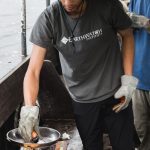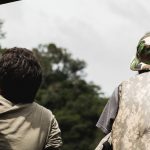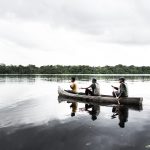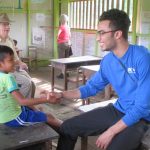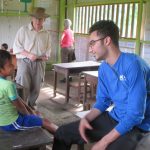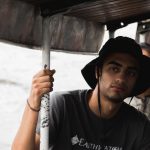A New Way of Thinking
Aside from witnessing the absolutely incredible ecology of the Peruvian amazon and having the privilege learning from a community of indigenous Cocoma, what was most important exposure I got while in Peru was being exposed to a new way of thinking. As an environmental science major I have been exposed to conservation research in terms of academia research and government research. However, I had never been exposed to conservation research as a business model. I believe this is something that is extremely important for a developing young scientist like myself. It does not matter if you agree with viewing conservation as a business or not, it is just important to be exposed to it. How does one fund research? Funding can be achieved through grants; however grants can be short term and unpredictable. Earthwatch is an organization that provides an alternative source of funding. Instead of just providing funds it also provides volunteers for research. At first I was a little skeptical of how this NGO’s business model worked. However, after finding myself part of their program in the Pacaya-Samiria National Reserve, observing and asking the lead scientist Dr. Richard Bodmer questions about their research, I was impressed by the breadth and capability of the research being conducted. Unlike many research projects I had been a part of or witnessed Dr. Bodmer and his teams research had such a broad definition of conservation. What Dr. Bodmer had was not just a research goal, he had a business plan and long-term goals showing incredible foresight. In terms ecological research Dr. Bodmer was conducting long-term assessment of the health of Pacaya-Samiria National Reserve. He and his team monitored the health and populations of river dolphins, amphibians, primates, fish, caimans, macaws, river otters, manatee, jaguars, tapirs, and wading birds among other organisms. Dr. Bodmer and his team specifically want to understand what the long-term ecological consequences of Climate Change had on Pacaya-Samiria National Reserve. This important long-term research was partially funded and conducted by Earthwatch volunteers as well as from University student programs. In addition Dr. Bodmer also wanted to conserve the History of the Peruvian Amazon. He did this by buying old rubber boom era boats. He repaired this boats and not only uses them to conduct his research but also uses them to provide ecotourism and created a boat museum in Iquitos. Dr. Bodmer also created an Indigenous peoples museum in Iquitos. Prior to creating this two museums Iquitos the fifth largest city in Peru had no museums. He also had bought a building owned by a rubber Barron and converted it into a hotel. He explained to me his plan was to create a way to fund his research because he wanted to collect long-term data. I do not know if I will ever use this knowledge in my career but it was incredible to be exposed to something different.
Species I saw while in Pacaya-Samiria National Reserve:
Common Squirrel Monkey
Red Howler Monkey
Saddleback Tamarin
Cocoi Heron
Great Egret
Great Black Hawk
Green King Fisher
Horned Screamer
Pink Dolphin
Grey Dolphin
Blue Yellow Macaws
Red Bellied Macaws
Anaconda
Black Caiman
Common Caiman
Renaco Tree
Giant Amazon River Turtle
Bullet Ant
Ectatomma tuberculatum
Caña Caña Plant
Cercropia Tree
Black-Collard Hawk
Ponga Tree
Cannonball Tree
Monkey Ladder Lianas
Anhinga
Amazon Kingfisher
Striated Heron
Muscovy Duck
Ringed Kingfisher
Black Squirrel
Green Kingfisher
Red-Bellied Piranha
White-Bellied Piranha
Hoatzins
Armored Catfish
Oscar Fish
Three-Toed Sloth
Jacana
Neotropical Cormorant
Great Egret
Capped Heron
Yellow Headed Caracara
Black Caracara
Osprey
